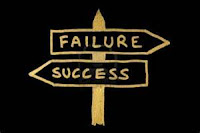 |
| Chopin |
When I was a college freshman, my teacher, Muriel Kerr, assigned Chopin's A-Flat Ballade. I was glad to play it, but hadn't a clue how to "honestly" negotiate passages like this. So, I just threw myself at them. Somehow I passed muster, but never felt really sure of myself. How did you do with your solution?
In this particular passage, we have to ask ourselves first how the composer intends for us to play the small notes. We know from notations he made in students' scores that appoggiaturas are to be played on the beat. (See Howard Ferguson, Keyboard Interpretation.) Personally, I sometimes find this idea not aways the most musical of solutions. Here, however, it makes perfect sense. I play this as indicated below.
 |
| Chopin Ballade in A-Flat |
As always, when the composer gives us a group of small notes that are not accounted for in the overall rhythmic scheme, we have to decide what that rhythm will be and how to place those notes with the adjoining parts. This goes for arpeggiated chords that are indicated with a symbol, as in the left hand. Side note, the thumb
notes, the A-flats, may be taken with the right hand. This becomes even more of an issue later, when the intervals are more extended. The tied-over melody note will have decayed to such a point as to be inaudible anyway. Test this theory on your own piano to see if I'm right.
















